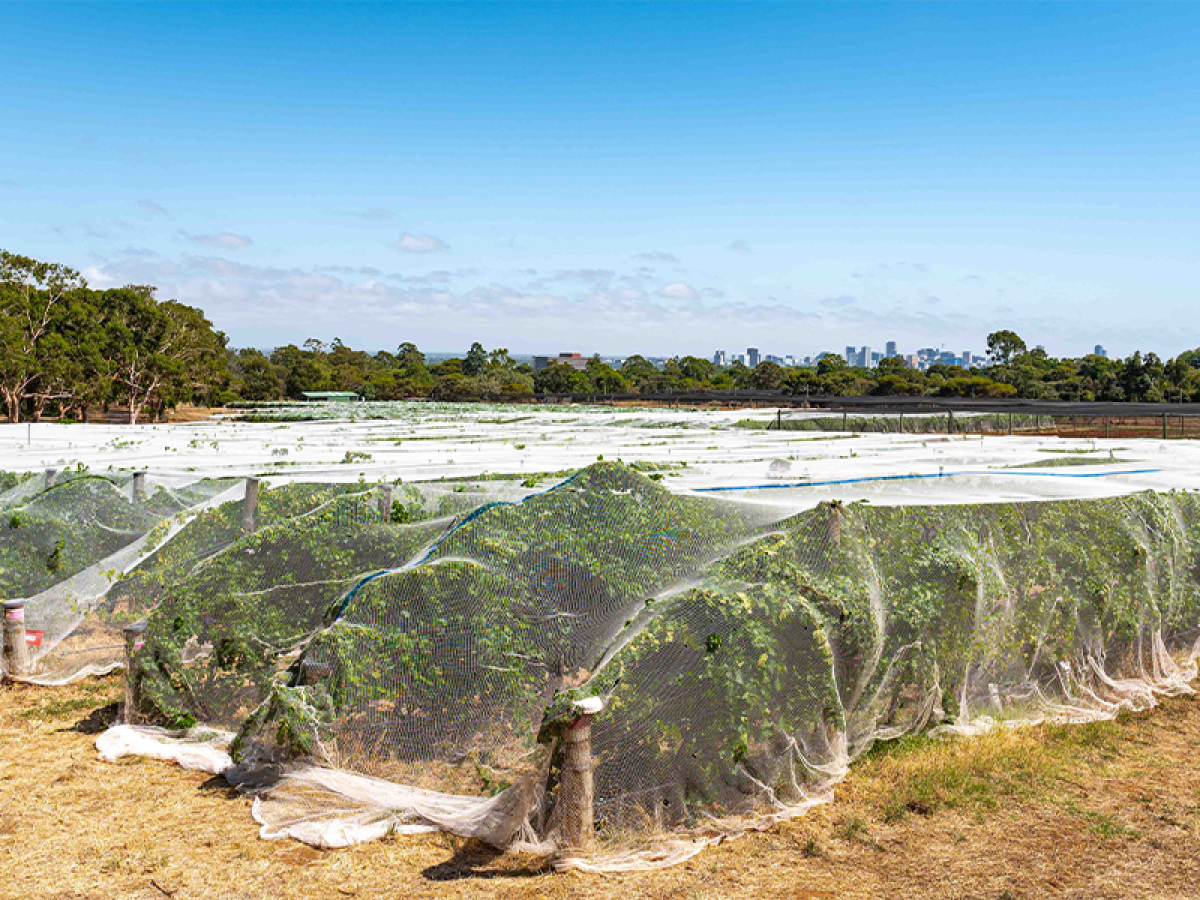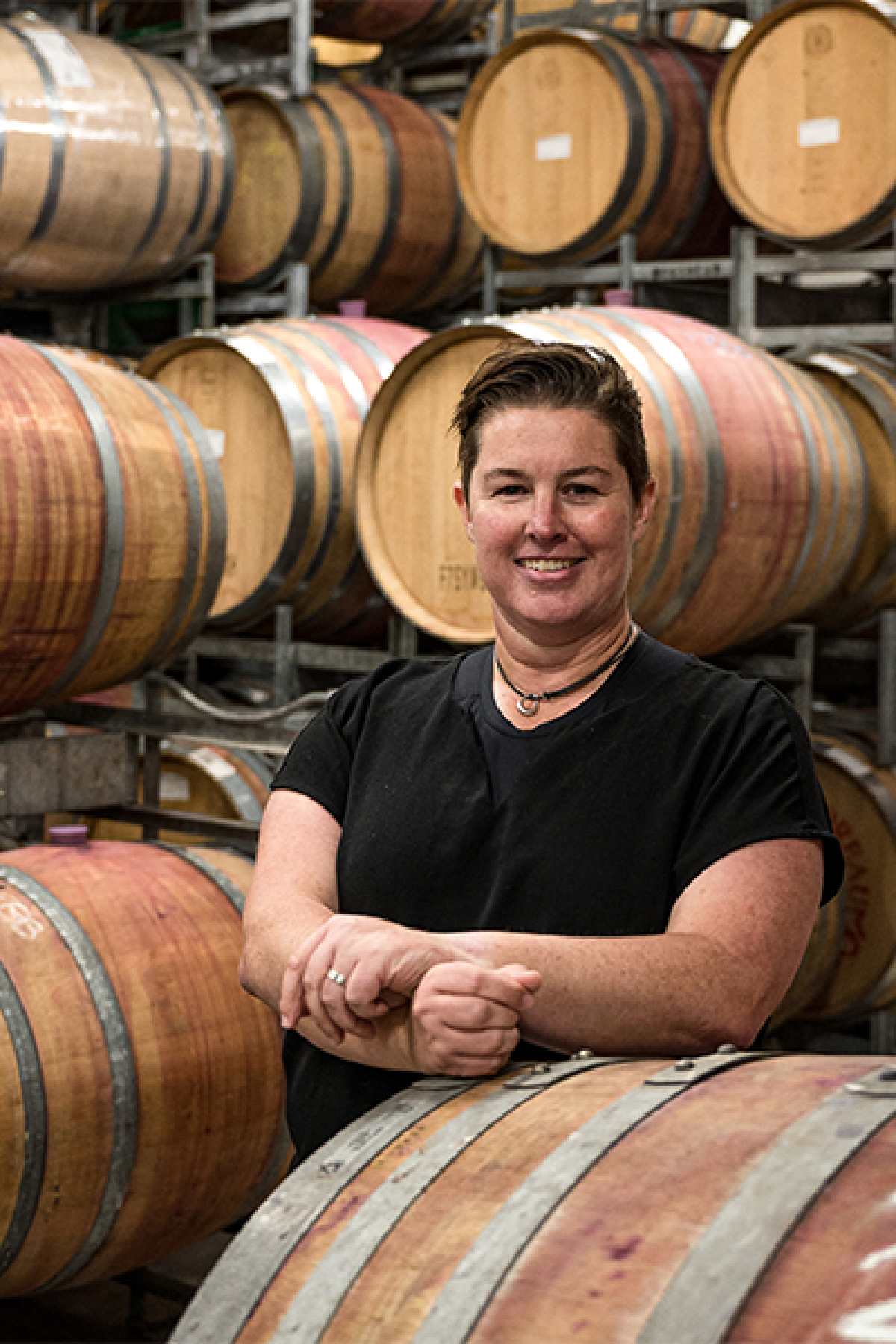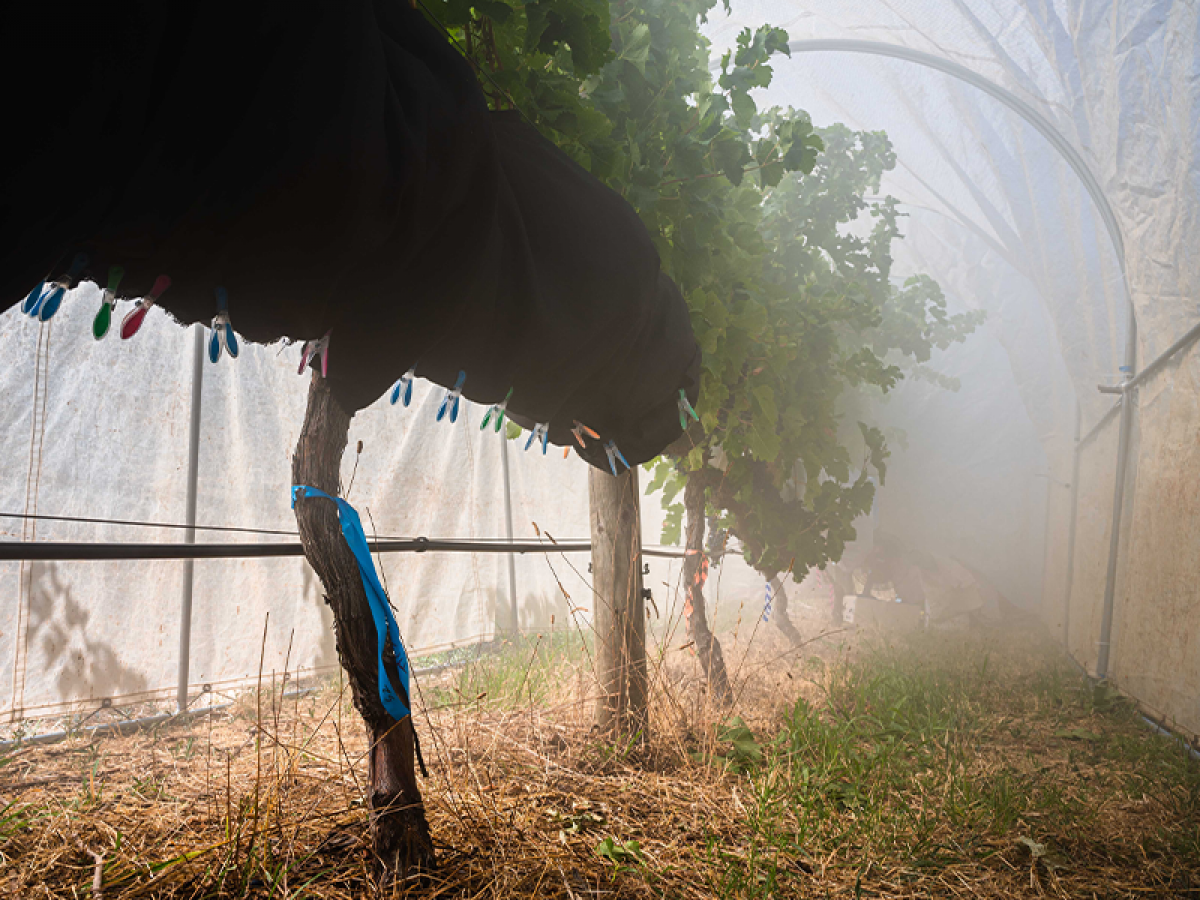Goodbye to Grenache? So long Shiraz?

Coombe vineyard, Waite Campus
Growing up, Sue Bastian (Associate Professor in Oenology and Sensory Studies at the School of Agriculture, Food and Wine) remembers her parents being teetotallers ... except for when the Vicar came around, which was often, and then they’d wheel out the drinks trolley and pour glasses of sherry from the crystal decanter. Sometimes Sue’s father would allow her a tiny sip after a Saturday lunch, but it wasn’t until later in life that she realised there was much more to wine than cream sherry.
In just a few short decades, our nation’s familial fondness for sherry all but died out. Mid-century migration sparked a cultural change in the palates of Australians, and the wine industry today is a significant contributor to the Australian economy and culture. Our taste for wine, though, still seems relatively predictable. According to 2021-22 data from Wine Australia, the top-selling still wine varieties are Sauvignon Blanc (18%), Shiraz (18%), Chardonnay (10%), Cabernet Sauvignon (9%) and Pinot Noir (6%).
Dr Richard Muhlack, Senior Lecturer, who teaches students at the Waite campus about the growing need for sustainable production, argues that these varieties may not be sustainable for a hotter, drier future. “The challenge in Australia is that we’ve got significant production located in regions which are already hot and dry and which are going to become hotter and drier,” he says.
“So if inland regions like the Riverland, Sunraysia, and the Riverina, which produce about two-thirds of Australia’s wine, get hotter and receive less rainfall, and if there’s less water accessible through irrigation from the Murray and other river systems, then that’s going to be a pretty big hit.”
Enter what, for now at least, are referred to as ‘alternative’ varieties of vines which are more suited to our harsher, drier conditions and poorer soils.
“If we want those regions to continue to grow grapes, then we need to look at alternative varieties,” says Richard. “We’ve historically grown varieties that were popular in France, but the growing conditions in France aren’t the same as they are in, say, Berri.We need to be looking at varieties that come from warmer locales, like in Spain or Greece, where they’re better adapted to warmer growing conditions.”
If, for example, you always select Syrah, you’ll probably find Montepulciano moreish; if you covet Cabernet, it’s comparable to Touriga Nacional; if you get into Grenache, you’ll probably like Nero D’avola.

Kerry Wilkinson, Professor of Oenology
With many alternative varieties already commercially available, the onus now is upon the producers to create awareness, and consumers to try a broader range of wines. “We need wines to match our very outdoorsy, Mediterranean climate,” says Sue.
“There are many alternative varieties that can be produced into a refined wine with good structure, but are perhaps also lighter and fruity and approachable. On a 36°C day, for example, who wouldn’t prefer a slightly chilled, medium-bodied red over a big, heavy one? We’ve done consumer research and every wine that we’ve shown – purely Australian wines made from these alternative varieties – has been loved.”
With a healthy international interest in our innovations, another challenge is to drive the research and innovation to meet global challenges, principally those associated with climate change.
Kerry Wilkinson (Professor of Oenology) is particularly interested in how vineyards and wineries can manage one of the catastrophes that comes with warmer and drier climates: bushfires.
“Bushfires are a really wicked problem that’s going to keep occurring as a consequence
of climate change,” says Kerry. “In recent years, it’s not just an issue for Australian grape growers and winemakers; we’ve seen fires in the US, South Africa, Canada, some parts of Europe and Chile.We are going to experience more bushfires, we just don’t know when or where they’re going to occur. “For vineyards that survive fires in close proximity, smoke taint becomes a significant issue.
“Through our research, we’re trying to give industry tools with which they can better assess the level of smoke taint and more quickly make decisions about whether they should harvest the grapes, or what kind of remediation strategies might need to be used to reduce the intensity of any perceivable smoke characters in the finished wine.

Smoke taint experiment, Waite campus
“The challenge in Australia is that we’ve got significant production located in regions which are already hot and dry and which are going to become hotter and drier.”Dr Richard Muhlack, Senior Lecturer
“Over the years we’ve been evaluating just about anything we can think of to mitigate the impact of smoke exposure, whether that be protective coverings or sprays in the vineyard, through to remediation strategies that try to remove smoke taint either during the fermentation process or from a finished wine.
“We use our expertise in chemistry and sensory science to evaluate those techniques to give industry confidence in strategies that are going to work, and to support them to make decisions before a bushfire event happens so that they know that if smoke exposure occurs they are prepared to evaluate and manage the impact.”
Staff and students at the Waite campus know all too well how changes in culture, climate and consumer choice sway their industry’s direction. The challenge is to stay ahead of the changes, and for education and research to focus on how practices in the vineyard, and in the winery, impact the composition of wine and the sensory properties.
“When I worked in industry,” says Richard, “I interacted with winemakers and viticulturists who, when confronted with technical or sustainability challenges, were often not really sure who they should
speak to or how they might go about addressing them.
‘What appealed to me about applying for my job here at Waite, moving from industry to the University, was the opportunity to teach and impact students before they embarked on their careers.
“I see the work we do here at the Waite campus as a fulfilling opportunity to help put our students in a good place and to really set them up so they’ll at least have
a leg up on the generation before, and be better equipped to tackle the sustainability challenges of the future.”
Story by Dr Simon Behenna, Internal Communications Coordinator.
